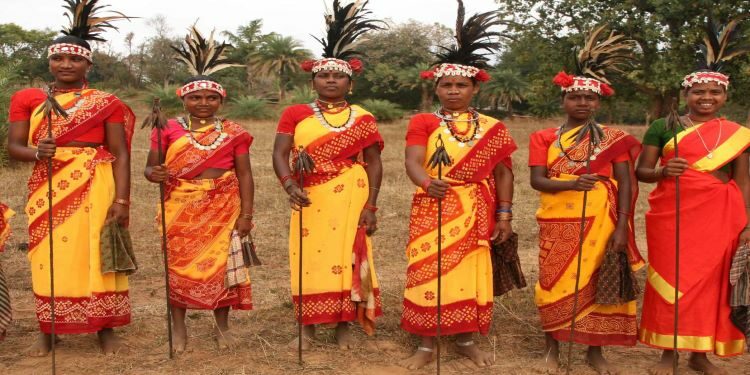In news : On the occasion of International Women’s Prime Minister of India mention praise the artistic works done by Gond Tribes, such as Gond art painting and Gond Paper Painting
A brief note on Gond Tribe
- Gond tribes are one of the large tribe of Central India
- They also call themselves Koitur or Koi.
- Location: Gond Tribes can be found in Madhya Pradesh, Chattisgarh, Orissa, Uttar Pradesh, Andhra Pradesh, Jharkhand, Bihar, Assam and West Bengal
- Language: They speak Gondi, which belongs to the Dravidian family of languages and is similar to Tamil and Kannada. And they also speak Sadri in Bihar and Jharkhand
- Culture: There is no cultural uniformity among the Gond, although the religion of all Gond peoples centres in the cult of clan and village deities, together with ancestor worship.The Gond people were known to offer human sacrifices, especially to the goddesses Kali, Danteshwari and Bara Deo
- Historic evidence: The first historical references from the Gonds comes from Muslim writers in the 14th century. Scholars believe that Gonds ruled in Gondwana, a region extending from what is now eastern Madhya Pradesh to western Odisha and from northern Andhra Pradesh to the southeastern corner of Uttar Pradesh
- Affiliated Kingdoms: The first kingdom of the Gonds was that of Chanda, founded in 1200, other kingdoms include; Garha, Kherla, Deoghar and Mandla(Rani Durgavati)
- Unique customs: Gond tribes venerate Ravana as Gade Raja, a figure they have been worshipping since ancient times.
- ST status: They are listed as a Scheduled Tribe
- Religion: Most Gonds follow their Hindu religion, which retains the animist beliefs of nature, and ancestor worship. Some Gonds also practice Sarnaism. Pola, a cattle festival, Phag are some of their major festivals
- Agriculture: Their traditional type of agriculture is slash-and-burn (jhum) cultivation on hill slopes; hoes and digging sticks are still used more than plows.
















